Other Winter tricks
SHOULD FEATHERS BE CUT OR NOT ?
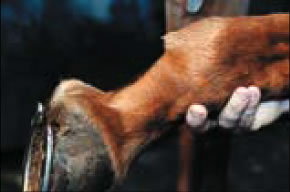
« Even after the shower and a dandy brush stroke, some sand or soil will remain in the long hair. Clipping feathers (see picture hereunder) is more practical for hooves maintenance and care but it requires more attention (in particular, pastern folds must be carefully dried coming back from training); this can be done on a horse living in a box, looked after and regularly watched over. Not on a horse cared in a rural way or living in a field. »
IT'S COLD: GIVE A SHOWER OR NOT ?
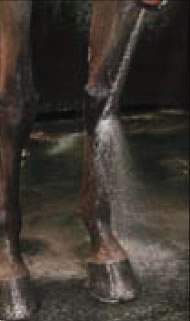
« It can be done only far from draughts (fatal for back and loins), with warm water or under a solarium. Giving a shower, shampooing, rinsing, rubbing with alcohol, dressing with a drying rug + a big warm blanket, and make the horse walk to let him dry. Giving the limbs a shower with cold water (see picture hereunder) doesn't cause any problem if they are well dried up with a towel, especially the pastern folds (area subject to fissures). »
PRODUCE YOUR OWN HOOF POLISH
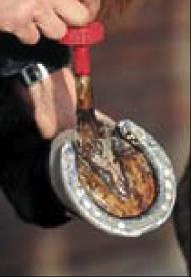
To protect the hoof and nourish the horn wall (see picture hereunder), which, in winter, has a tendency to dry and crack, Polo produces its own hoof polish. « Buy some thick Norwegian tar (not too liquid) and mix 2/3 of it with 1/3 of laurel oil. To be applied only on sole, frog and horn wall until mid-hoof. It's super to keep the horn moisturized. »
TOOLS CARE
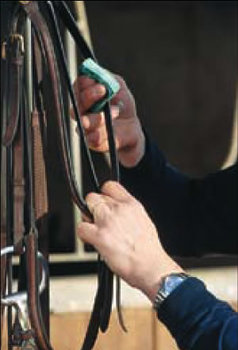
• Leather also hates dampness. After each use in muddy or rainy conditions, clean with some glycerine soap without using water. Carry out a deep cleaning once a week : dismantle parts, grease or oil them. Whatever the product, it should be applied as uniformly as possible (but not on fastening and seams) to avoid unpleasant leftovers.
• To avoid dirtying the blanket too fast, use an underneath sheet, easier to wash and faster to dry.
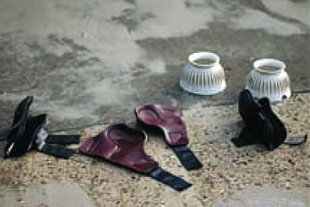
• Keep two wrap sets to replace the soaked ones when coming back from training; brush them before taking them away to remove wisps of straw and shavings; dusting of Velcro fastenings and tissue will be quicker when winding.
• Don't forget to carefully clean (by water jet or brush) the bell boots inner area to remove sand and soil which could cause friction wounds when used the next time. « It's better if they are dirty outside and perfect inside than the contrary. »
• When a saddlery is cold and damp, putting a cover on a saddle doesn't protect it. If you ride in an irregular manner, store your equipment at home after each session to preserve leather at room temperature. Excessive heat is not good either.